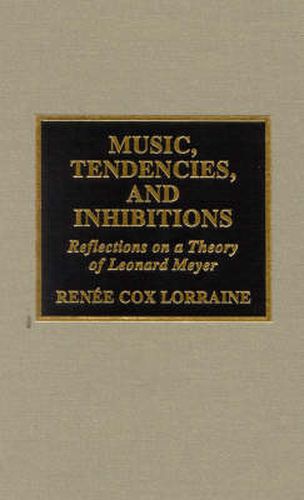Readings Newsletter
Become a Readings Member to make your shopping experience even easier.
Sign in or sign up for free!
You’re not far away from qualifying for FREE standard shipping within Australia
You’ve qualified for FREE standard shipping within Australia
The cart is loading…






Leonard B. Meyer has proposed that when musical tendencies or expectations are inhibited by musical ambiguity or the unexpected, those inhibitions and their subsequent resolutions are likely to be provocative or engaging. Music, Tendencies and Inhibitions will explore the relevance of this theory to music and various other disciplines, and to psychological and natural processes. Each chapter consists of two parts: a presentation and consideration of an aspect of Meyer’s theory, and a more associative or rhapsodic section of Reflections on this aspect.
The book will focus on Meyer’s aesthetic rather than his music-theoretical proclivities, and is intended for academics and students in various fields as well as educated non-academics. The music scene is fluctuating, Meyer suggests, in that new and original styles or techniques are continuously emerging or developing on a small scale; it is static in that many of these developments seem unrelated, and are not likely to be grasped or progress as a whole. It will be posited that this theory foreshadowed and reflects important ideologies of contemporary culture, including postmodernism.
$9.00 standard shipping within Australia
FREE standard shipping within Australia for orders over $100.00
Express & International shipping calculated at checkout
Leonard B. Meyer has proposed that when musical tendencies or expectations are inhibited by musical ambiguity or the unexpected, those inhibitions and their subsequent resolutions are likely to be provocative or engaging. Music, Tendencies and Inhibitions will explore the relevance of this theory to music and various other disciplines, and to psychological and natural processes. Each chapter consists of two parts: a presentation and consideration of an aspect of Meyer’s theory, and a more associative or rhapsodic section of Reflections on this aspect.
The book will focus on Meyer’s aesthetic rather than his music-theoretical proclivities, and is intended for academics and students in various fields as well as educated non-academics. The music scene is fluctuating, Meyer suggests, in that new and original styles or techniques are continuously emerging or developing on a small scale; it is static in that many of these developments seem unrelated, and are not likely to be grasped or progress as a whole. It will be posited that this theory foreshadowed and reflects important ideologies of contemporary culture, including postmodernism.